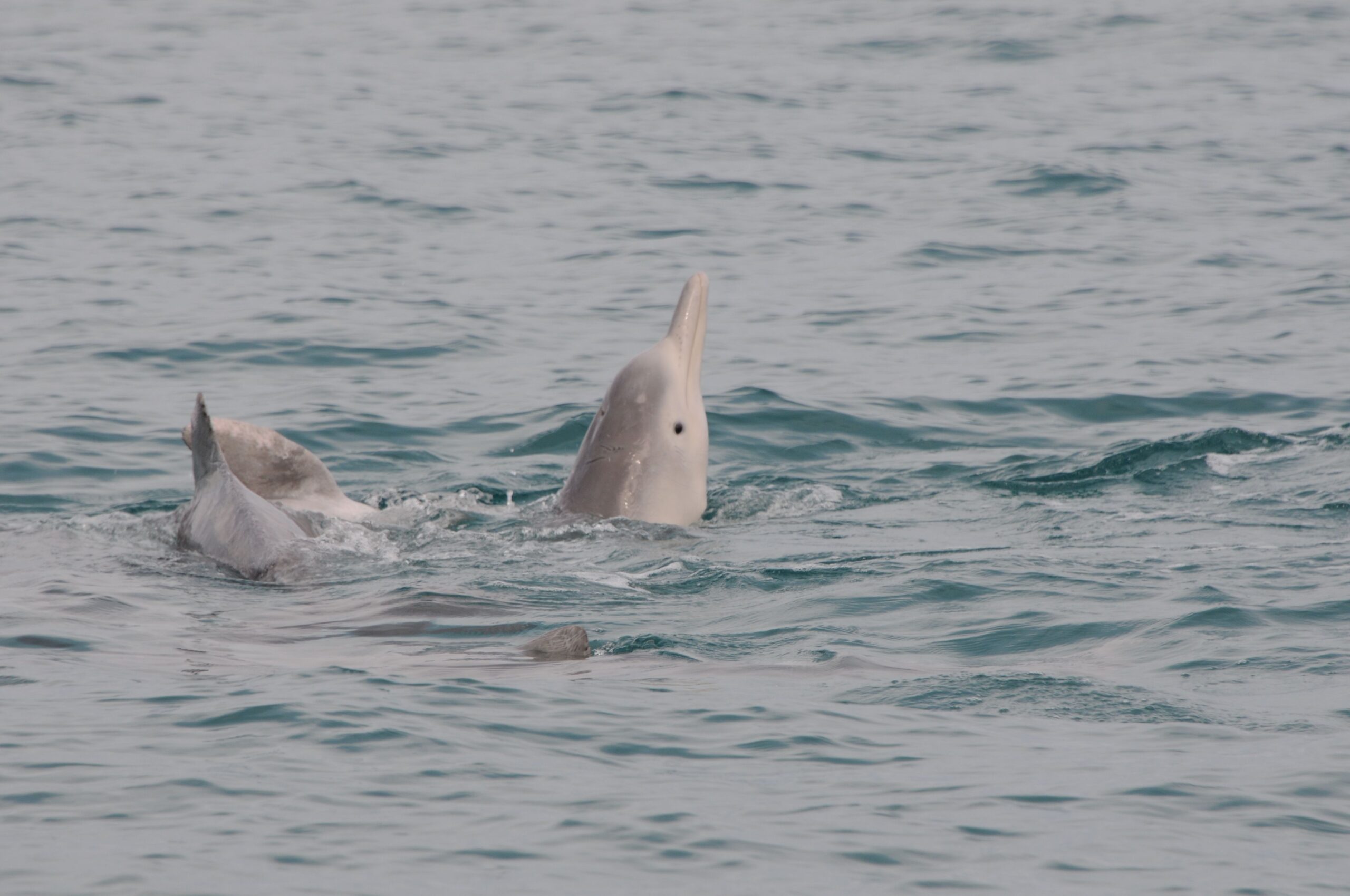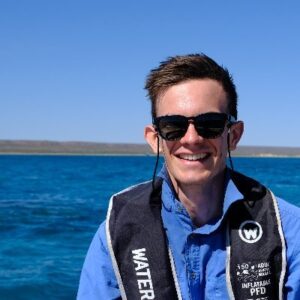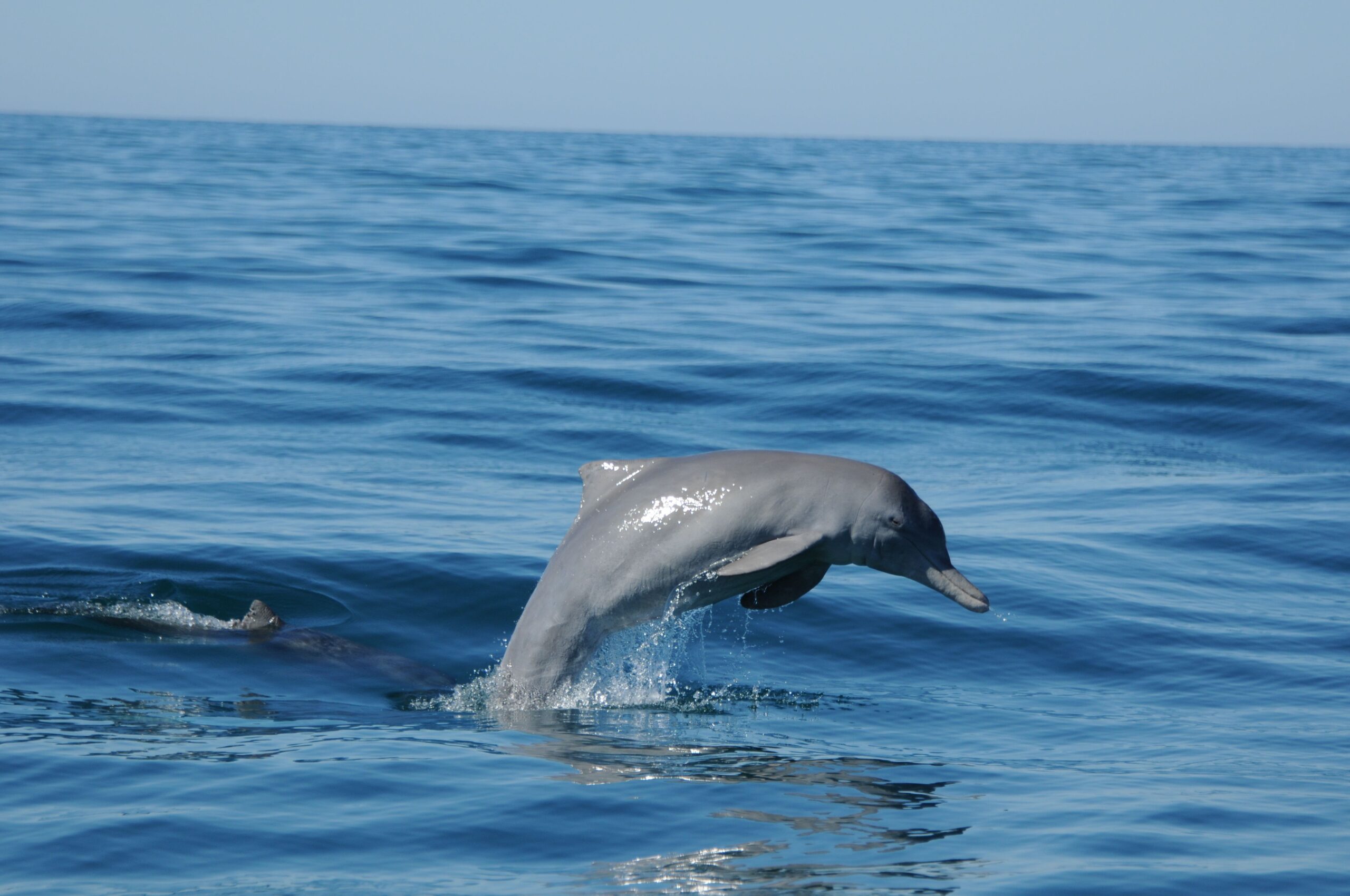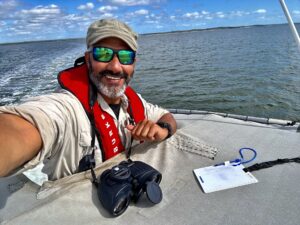
In-depth research of two of Australia’s dolphin species shows how their behaviours have evolved to co-exist and form mixed species groups in northwestern Australia.
In the first extensive study of its kind, published in the journal Animal Behaviour, Flinders University researchers shed light on the intricate mechanisms facilitating the co-existence of two species of dolphins, the Australian humpback dolphin (Sousa sahulensis) and Indo-Pacific bottlenose dolphin (Tursiops aduncus).

Using detailed data collected over a six-year period around the North West Cape, WA, the research, led by Dr Jonathan Syme and Associate Professor Guido J Parra from Flinders University’s Cetacean Ecology, Behaviour, and Evolution Lab (CEBEL), harnessed behavioural focal follow data to study coexistence mechanisms and the functions of their mixed-species groups.
Flinders College of Science and Engineering PhD Dr Jonathan Syme says key findings from the study reveal distinct behavioural patterns between the humpback and bottlenose dolphins, indicating differences in resource utilisation and behaviour within the study area.
“Humpback dolphins were observed spending more time travelling, with higher transition probabilities towards travelling and longer bout lengths of travelling. Conversely, bottlenose dolphins exhibited more time spent foraging and longer foraging bouts.
“These behavioural patterns suggest that humpback and bottlenose dolphins utilise the study area differently, potentially minimising direct competition and facilitating coexistence.
“Specifically, temporal differences in foraging behaviour between the two species may contribute to their ability to share resources in the same habitat.”

The study encompassed observations of both single-species and mixed-species groups of humpback and bottlenose dolphins. The primary aim was to investigate potential mechanisms facilitating behavioural coexistence and to discern the functions of mixed-species dolphin groups.
The study also investigated the behaviour of mixed-species groups, revealing interesting insights into the social dynamics of these interactions.
When in mixed-species groups, both humpback and bottlenose dolphins exhibited altered behavioural patterns, displaying higher transition probabilities towards socialising and increasing time spent socialising.

Co-author and CEBEL director, Associate Professor Guido Parra, says the results emphasise the potential social benefits derived from mixed-species group formation.
“Mixed-species groups may serve a social function such as the practicing of socio-sexual behaviours, the provision of an ideal environment for the development of calves, and ‘alloparental’ care (when individuals who are not the biological parents of offspring help take care of them).
“The findings of this study not only contribute to our understanding of the coexistence dynamics of marine mammal communities but also the functions of their interspecific interactions,” adds Associate Professor Parra, who supported the work with Assistant Professor Jeremy Kiszka, from Florida International University, US.
The article, Behavioural variation facilitates coexistence and explains the functions of mixed-species groups of sympatric delphinids (2023) by Jonathan Syme, Jeremy J Kiszka (Florida International University) and Guido J Parra has been published in Animal Behaviour (Elsevier) DOI: 10.1016/j.anbehav.2024.01.016
 Acknowledgments: The research was supported by the Australian Marine Mammal Centre (Project 12/11), the Winifred Violet Scott Charitable Trust, the Holsworth Wildlife Research Endowment and the Ecological Society of Australia. J.S. was the recipient of a Flinders University Postgraduate Scholarship while conducting this work.
Acknowledgments: The research was supported by the Australian Marine Mammal Centre (Project 12/11), the Winifred Violet Scott Charitable Trust, the Holsworth Wildlife Research Endowment and the Ecological Society of Australia. J.S. was the recipient of a Flinders University Postgraduate Scholarship while conducting this work.
Researchers acknowledge the Baiyungu, Thalanyji and Yinikurtura peoples as the Traditional Custodians of the lands and waters where this study was conducted. Tim Hunt, Daniella Hanf, Rebecca Haughey and research assistants assisted with data collection and thanks also to Parks and Wildlife Service Exmouth and the Cape Conservation Group for supporting the North West Cape Dolphin Research Project. The Coastal and Oceans Division of the Institute of Environment at Florida International University also supported the project.








